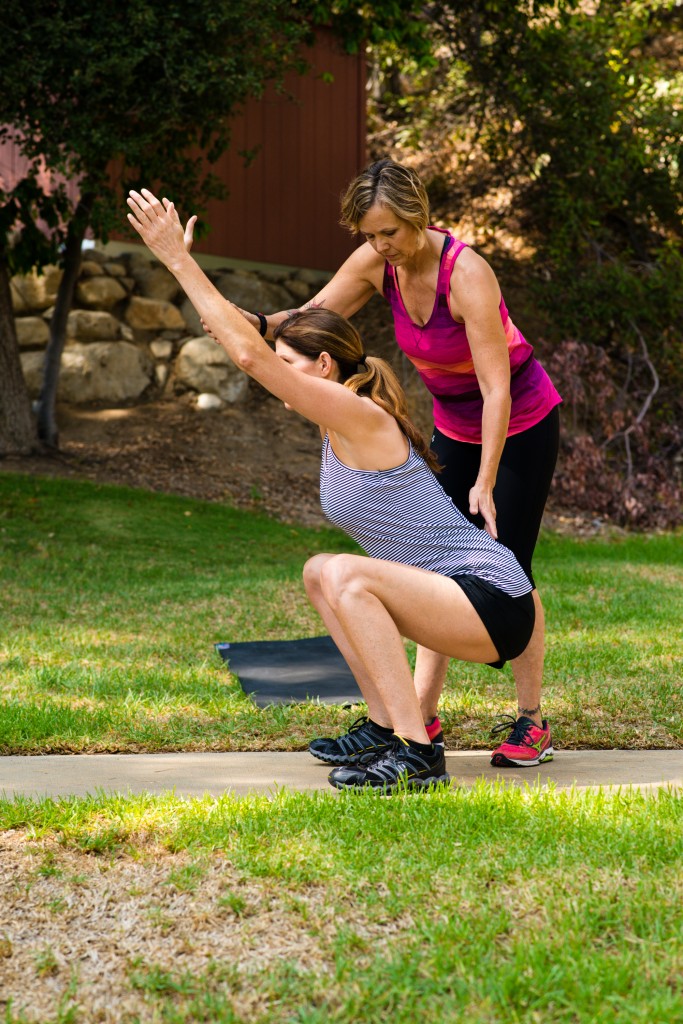Cop a Squat
As I was researching this blog post, I found myself racing down the rabbit hole only to read questions like… is it “cop a squat” or “pop a squat?” If you were raised in the 60’s and 70’s you know the answer is cop. But, then we also used to say “cop to it,” “cop a feel,” “cop out” and of course…“call a cop.” It was such a simple word, yet had so many unrelated meanings. Ah, but now I’ve digressed. (sigh)
Today’s blog post is simply about… squatting. So, grab your coffee and cop a squat.
You are going to quickly see that I’m a huge advocate for squatting. Anyone who has watched a child or National Geographic show will agree that squatting is a perfectly normal movement which human beings are designed to perform well in to old age.
You can’t get around it. Every day, we are all squatting to various depths when we use a chair, sofa, car or toilet. Then there’s picking something up off the ground. You can either bend over and pick it up with your back or squat down and pick it up with your legs. People who have strained their back will know which way is better.
Somewhere in our dim and distant past, Western society became more comfortable with raising the floor than maintaining the ability to squat down. In researching the alternatives to Western style toilets I can definitely appreciate the reasoning at least in that specific area. However, comfort comes at a price and it is now common for adults of any age to either lack the kinesthetic awareness or physical strength to squat properly. Something so inherently natural and critical to physical competency has become extremely difficult for many people. How does that happen? Simply put… Use it or lose it.
Neglecting to squat can also create a huge hurdle in the escalating desire to grow old gracefully. Think of your parents or grandparents physical competency. Can they stand up from a chair without pushing off with their hands? Can they use a toilet without a hand rail? Can they even get in and out of a car without assistance? All these activities may be visible indicators of a person’s base level of ability or inability to squat.
Many people have concerns about the movement. Maybe they have knee or back trouble, maybe someone influential in their life says squatting is bad, or maybe when they try to squat on their own they feel pain or discomfort. From my experience, the majority of these concerns can be alleviated with a proper assessment and exercise program developed for their specific body.
Part of a coach’s job is to help people restore their physical competency. In part, to maximize their ability to thrive in daily life, but also to help prepare them for a future when strength and mobility are no longer a given and the freedom of movement has to be earned every day.
All of my prospective clients are given a free and simple yet challenging workout as part of our initial getting to know each other. They use it as an opportunity to get a feel for my coaching style and I use it as a basic assessment of their physical abilities. As a bonus, on the tail end of the workout, the person also has a very clear picture of where they stand competency wise. Hopefully, this will help them release any denial of their present state, which can then enable them to take the actions necessary to create positive change.
Those who are ready to take charge of their future and go forward with my services are given a thorough assessment. This is followed by an exercise program that first corrects their muscular imbalances then strengthens the weakest areas, followed only then by developing their potential as athletes. This almost always means is that I teach them how to squat properly and eventually with weight. The specific type of squat and amount of weight (if any) is dictated by their ability and needs.
The magic that comes with the ability to squat can be as simple as being able to walk up and down stairs or standing up from a chair or low sofa without assistance. Moreover, being able to squat with weight opens the door to increasing strength throughout numerous muscle groups in both the lower and upper body. Increasing bone density through weight training, combined with healthy nutrition, can start to improve body composition, mental outlook and emotional balance. The beauty of working with a skilled coach either privately or in a small group setting is that we can build a program appropriate to your specific abilities and modify it as your body changes. The benefits of strength training cannot be stressed enough and in my world it all starts with a simple squat.




